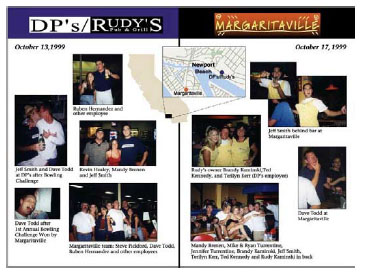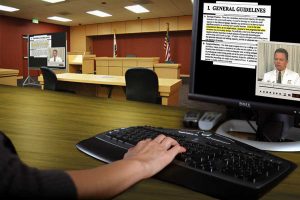Moving Pictures: Video Wins In The War Of Words
February 29, 2012
Demonstrative Exhibits
March 15, 2012Simplify and clarify your story for the jurors by using
visuals to shine a spotlight on your best evidence
By Rick Kraemer and Adam Shea
“Please be good enough to put your conclusions and recommendations on one sheet of paper in the very beginning of your report, so I can even consider reading it.”
— Winston Churchill
 With the preparation of any trial presentation, there are always three crucial components involved: the evidence, the technology, and (the most critical) delivering a clear story to the jury for the achievement of a verdict. Let’s call them the “what,” the “how” and the “why,” respectively.
With the preparation of any trial presentation, there are always three crucial components involved: the evidence, the technology, and (the most critical) delivering a clear story to the jury for the achievement of a verdict. Let’s call them the “what,” the “how” and the “why,” respectively.
During the construction phase of a trial presentation, there’s an understandable tendency to pay more attention to the “what” and the “how.” But by shifting the focus away from the “what” and “how” and more toward the “why” you can and will create a more targeted and comprehensive presentation strategy that yields greater impact.
Motivating a jury to get from A to B is a complex task. Jurors are subjected to bombardments of information, and have their own personal distractions with which to contend. Beyond the cultural and educational differences, people have different ways of learning and retaining information. They will need to decide a verdict, while being attentive, receptive, and absorbing all of which you are about to overwhelm them. Making that happen becomes easier when you develop a focused strategy that allows them to reach their destination: the verdict. And it all begins by starting with and defining the “why.”
THE HEART OF THE MATTER
Without direction, getting your jurors through the journey from opening remarks to a verdict would be like planning a trip without a destination: if you don’t know where you are going, how are you going to get there?
Begin by answering that motivating core question that will help you focus your presentation strategy: “Why am I here?” The answers will be different for each of the involved parties. Yours may be “I am here to deliver a presentation that will empower the jury to decide in favor of my client.” A juror’s answer may be, “I am here to make a decision that will right a wrong.” And it’s a decision most don’t take or make lightly. Once impaneled, jurors become emotionally invested in the outcome and take the duty very seriously. They need to believe they are doing the right thing, so that at the end of the trial they feel empowered by their decision and their service. To appeal to that sense of responsibility their “why” – their purpose – needs to be defined and stated up front, and introduced in your opening statement. It becomes the foundation upon which your presentation then gets built. This focus will help decide what you need to spotlight, and what you need to eliminate.
Leonardo da Vinci said, “Simplicity is the ultimate sophistication.” And keeping things simple in trial presentations is an important key to empowering a jury. More than just passionate arguments, illustrations, and testimony, trial presentations have to be structured and unburdened by nonessentials so jurors can collect and comprehend the evidence and its implications. Getting the jury motivated toward a verdict requires clearing a direct path through the trial data allowing them to get through it more easily. To take them on that trip you need a vehicle filled only with what’s required for it – in most cases that’s the evidentiary information presented in as orderly and direct a manner as possible.
A trial presentation’s organization primarily requires the following:
- Simplicity
- Clarity
- Motivation

